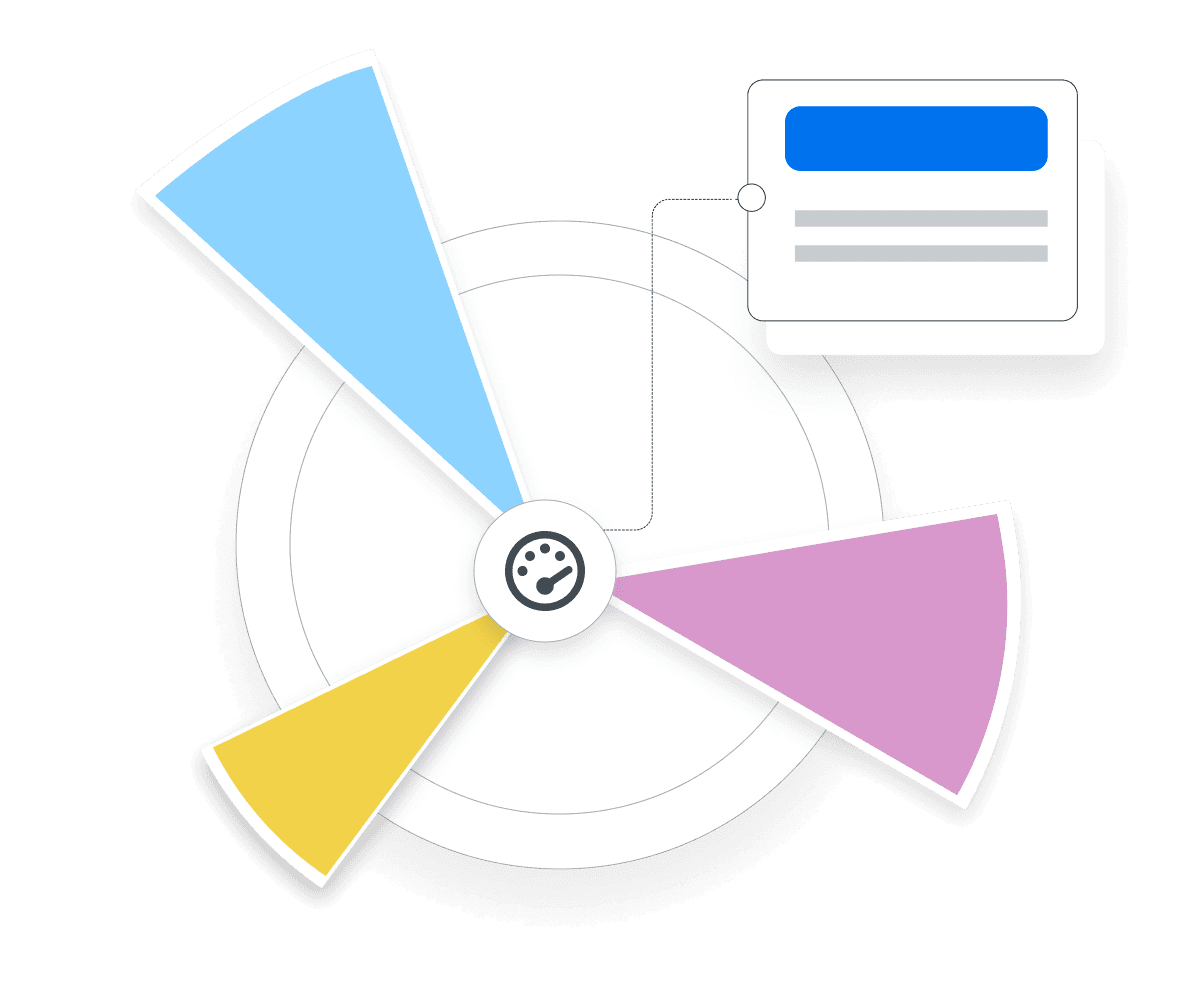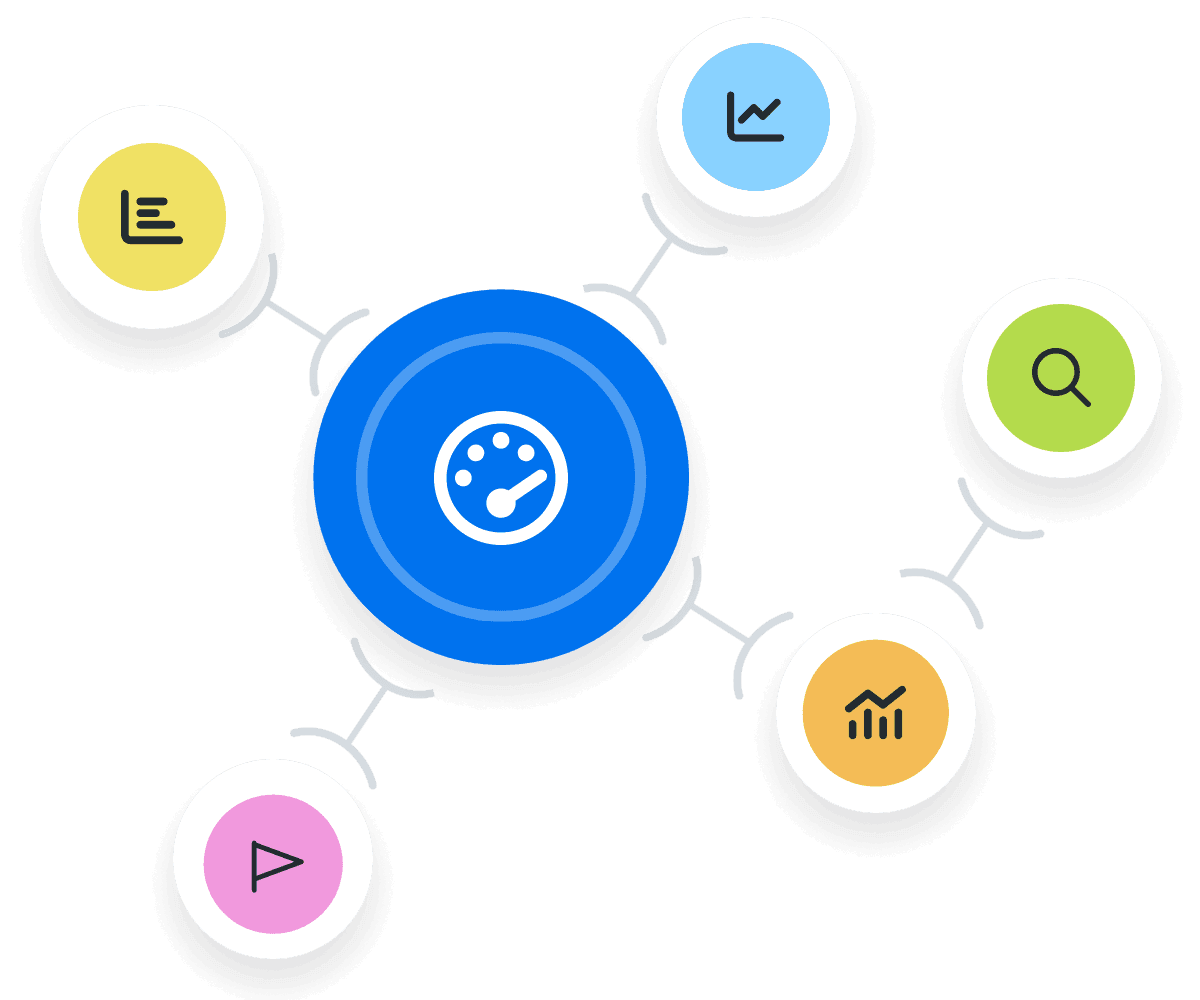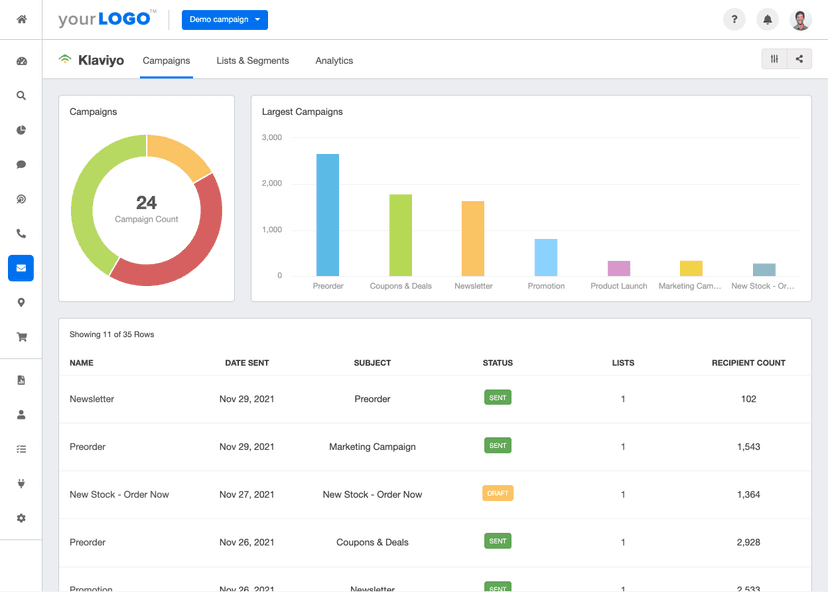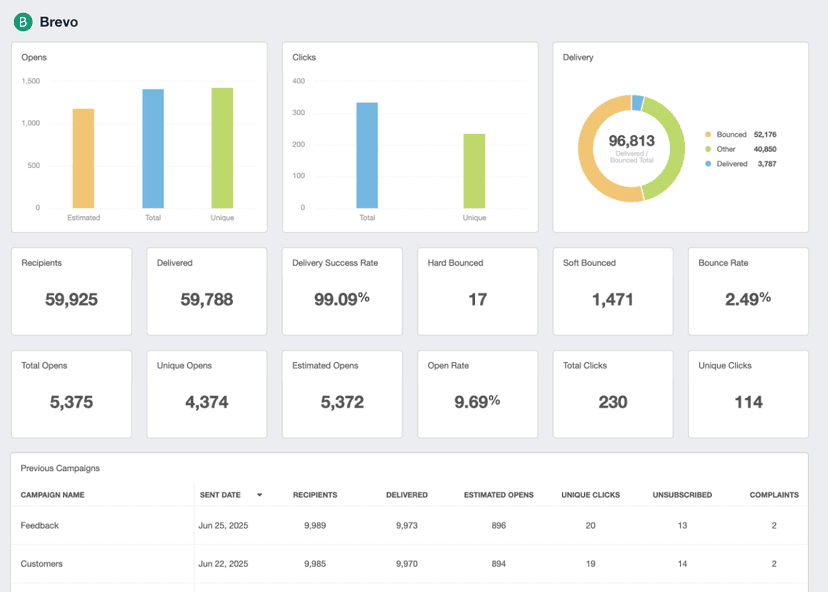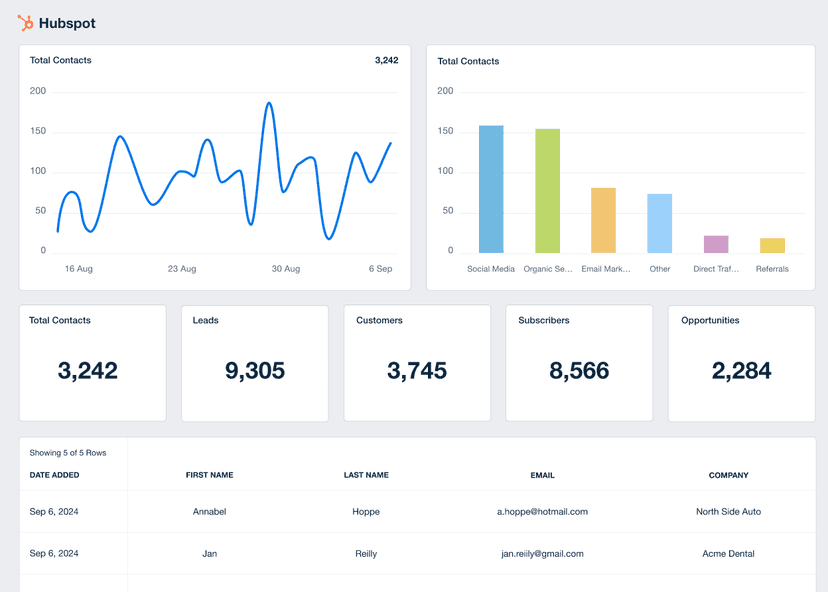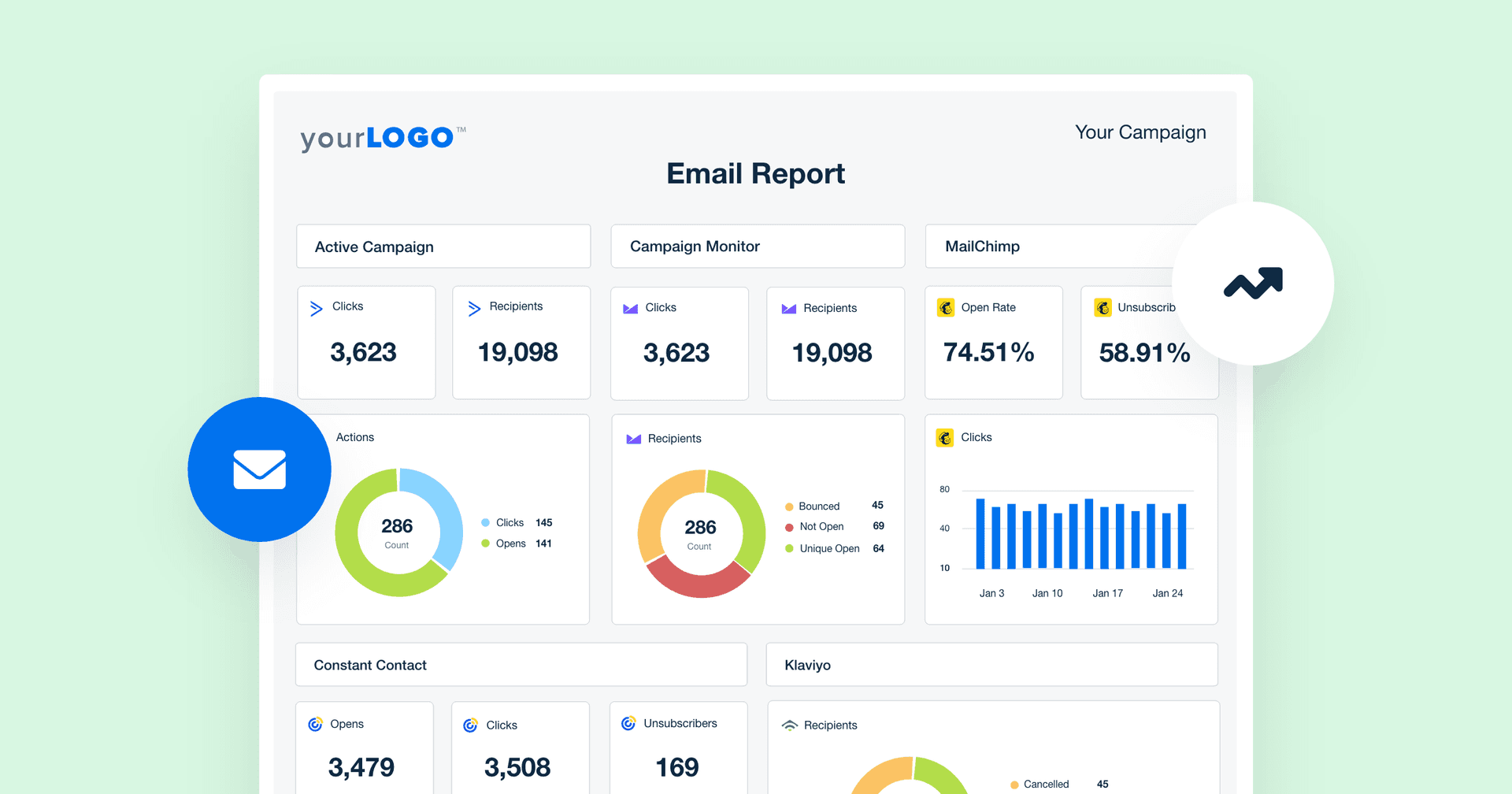Email Subscribers
Tailored Messaging
Analyze Subscriber interactions to inform targeted communication strategies.
Trend Analysis
Review Subscriber sign-up rates and drop-offs to understand campaign traction.
Conversion Tactics
Use Subscriber response data to tweak calls-to-action for higher engagement.
Highlight Value
Display Subscriber increases in client reports as evidence of marketing success.
Why Email Subscribers Are Important
Email Subscribers serve as a direct indicator of a brand's growing interest, audience engagement, and lead generation. This metric is important as it reflects a person's choice to receive updates, making them a valuable segment for targeted marketing efforts.
Measuring the number of Email Subscribers helps assess the appeal of content and the effectiveness of lead magnet strategies such as an email signup form. It's not just about the raw count; it's about understanding the health of the engagement funnel. A healthy base of existing Subscribers helps amplify the reach of marketing messages and increases the potential for conversions, laying a foundation for sustained business growth.
Stop Wasting Time on Manual Reports... Get Email Insights Faster With AgencyAnalytics
How Email Subscribers Relate To Other KPIs
To put the Email Subscriber metrics in context, it’s important to look at the entire journey, which typically starts with a website visit. The lead capture rate, through some type of sign-up form, helps gauge the relevance of content.
A rising Subscriber count suggests the content is resonating well with the target audience, likely contributing to improved website traffic and social media engagement. If website visitors are willing to complete a subscription form, it strongly indicates the content’s value and resonance. On the other hand, a drop in Email Subscribers might signal a need to revisit content strategies or user experience designs.
Once the Subscriber has opted in to receive communications, the metrics from email marketing campaigns come into play to help determine if the Subscribers are engaged. Bounce Rates (both hard and soft bounces), Email Open Rates, Click-to-Open Rates, and Conversion Rates help paint a picture of the value and relevance of new Subscribers.
How To Drive More Email Subscriptions
To boost email subscriptions, the first place to focus is on optimizing landing pages. A landing page must clearly convey the benefits of subscribing, potentially offering incentives like a free eBook or other valuable resource. The goal is to turn website visitors into Email Subscribers by presenting them with a compelling reason to sign up.
Subscription forms are critical. Their strategic placement across the website, including on the homepage and within content, helps increase subscription rates. For example, an exit intent popup engages visitors at key moments, encouraging them to subscribe before leaving the site. Utilizing social media platforms to direct traffic to these landing pages also increases the number of potential Subscribers.
A combination of clear, direct messaging and well-placed subscription forms is essential for Email Subscriber growth. This approach should prioritize a straightforward value proposition and user-friendly design to convert visitors into Subscribers.
We view email marketing as a mid-funnel marketing channel that helps us increase overall sales and revenue when coupled with top-of-funnel efforts from our advertising and content marketing efforts. This means that we look at how traffic generated from other channels leads to new email subscribers and how the entire funnel leads to revenue-producing conversion events.
How To Calculate Email Subscribers
To accurately measure Email Subscribers, track the total number of individuals who have actively signed up for communications, such as newsletters or updates, over a specific period. This involves monitoring sign-ups through digital platforms, including websites, social media, exit intent popups, or email campaigns.
Regularly compare these figures against previous periods to assess growth or decline in Subscriber interest, providing valuable insights into audience engagement and content strategy effectiveness.
Subscriber Growth Rate Formula Example
What Is a Good Number of Subscribers?
A good average for Email Subscribers typically reflects steady growth or stable numbers over time. For instance, a consistent month-over-month increase or a Subscriber count that surpasses industry averages indicates strong audience interest and effective content strategy.
Agencies also benchmark against past performance; a healthy benchmark often sees at least a 5-10% growth in Subscribers within a set period.
What Is a Bad Number of Subscribers?
A bad average in Email Subscribers is usually indicated by a stagnating or declining count over consecutive periods.
If Subscriber growth falls significantly below industry standards or shows a decrease of more than 5-10% month-over-month, it suggests diminishing audience engagement, meaning a review and adjustment of content and marketing strategies is needed.
How To Set Subscriber Benchmarks and Goals
In cases where industry benchmarks are unclear, agencies should focus on historical data. Analyzing trends in Subscriber data over time helps in understanding what growth or decline patterns are typical for the specific audience and industry.
Agencies back-calculate the required Email Subscribers to meet specific revenue targets, using conversion rates to determine how many Subscribers are needed to achieve desired sales or engagement goals. This method allows customized benchmarks that are more closely aligned with business objectives and audience characteristics.
For example, a boutique retailer serving the local community may be happy with a subscriber growth rate of 100 new Email Subscribers per month. However, a larger eCommerce business serving a national or international audience may require a monthly list growth rate in the thousands to move the needle.
Why Email Subscribers Matter to Clients
From a client's perspective, Email Subscribers are a direct line to their target audience. This metric serves as a gauge of customer interest and loyalty to the brand. A growing Subscriber count indicates increasing consumer trust and interest, which translates into higher sales and customer retention rates.
A dedicated Subscriber base often equates to a more engaged audience, willing to provide feedback and share content, amplifying brand visibility. Clients view Email Subscribers as a positive growth metric and as potential brand ambassadors who drive awareness through word-of-mouth.
Why Email Subscribers Matter to Agencies
For agencies, Subscribers are a tangible measure of content strategy success and audience reach. This metric helps agencies evaluate the effectiveness of their marketing efforts in capturing and retaining audience interest.
A large Subscriber list provides agencies with a ready audience for A/B testing, campaign effectiveness analysis, and targeted marketing strategies. Agencies leverage Subscriber data to gain insights into consumer preferences and behaviors, which are critical for refining marketing tactics and developing personalized content.
Win Back Billable Hours by Automating Your Client Reporting
Best Practices When Analyzing and Reporting on Subscribers
Analyzing Subscribers from various perspectives will help to identify trends, measure campaign success, and adjust tactics for maximum impact. Here are 6 best practices to ensure efforts are data-driven.
Contextualize Subscriber Data
Evaluating Subscribers in relation to overall marketing goals, target audience characteristics, and industry benchmarks provides a more nuanced understanding of its impact.
Align Metrics With Client Objectives
Understanding client objectives allows for more targeted Subscriber growth tactics and content strategies that resonate with the desired audience.
Interpret Trends and Anomalies
Analyzing variations like spikes and drops in Subscribers reveals insights into audience behavior, content reception, and potential external influences.
Ensure Data Accuracy
Regular audits of subscription sources and methods, along with cross-verification against other metrics, help maintain data integrity.
Monitor Trends Over Time
Observing how Subscriber numbers change monthly, quarterly, or annually offers insights into the long-term effectiveness of marketing strategies.
Visualize Performance
Graphs and charts make it easier to spot trends, compare performance over different periods, and present data in a clear, understandable manner.
Sent, Delivered, Opened, Clicked, and Unsubscribed are all important email metrics and can’t be looked at in isolation. Any metric has to be considered against a desired outcome.
Mailchimp Dashboard Example

How To Increase Subscribers
Enhancing Subscriber count is all about cultivating an engaged audience. Here are three actionable tips to effectively increase and maintain a robust Subscriber base.
Optimize Sign-Ups
Make the subscription process as simple and inviting as possible. Place eye-catching sign-up forms and strategically on the website and social media pages. Ensure that the process requires minimal steps and is accessible from every page of the website.
Value-Driven Content
Conduct surveys or use analytics to understand what the audience finds useful or entertaining. Regularly provide high-quality, relevant content that meets these needs to keep Subscribers engaged and reduce unsubscribe rates.
Engage and Listen
Actively engage with Subscribers through surveys, polls, and feedback requests. Listening to their feedback and implementing their suggestions where possible shows that the business values their input, fostering a stronger connection.
Related Blog Posts
See how 7,000+ marketing agencies help clients win
Free 14-day trial. No credit card required.


